Wabi-sabi allows you to find happiness, 6 ways to live a simple life
"Minimalism" is not about simplifying for the sake of simplifying.
Instead, try your best to keep the things you cherish,
Give it enough time and space,
Don't let other things interfere with your thoughts and concentration.
"The Less You Have, the Happier You Are: The Minimalist Way to Get Rid of Material Constraints and Renew Your Life"
The More of Less: Finding the Life You Want Under Everything You Own
Joshua. Baker Follow the original author: Joshua Becker
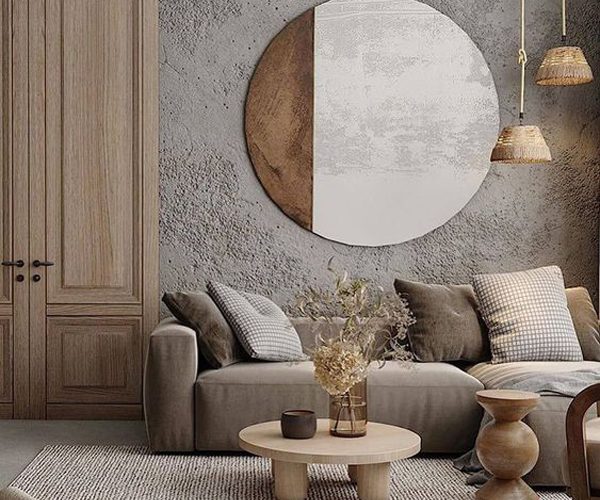
"Wabi-sabi" is a Taoist religion that originated in the Song Dynasty of China (AD960-1279), and later introduced into Zen Buddhism. Initially, "Wabi-sabi" was a simple and restrained aesthetic method. "The beauty of simplicity" is exactly what "wabi" (wabiwabi) means, and "silence" (solitudesabi) means "the impermanence of all things in life and the passage of time", which together form Japan's unique culture, philosophy and aesthetics.
Characteristics of wabi-sabi:
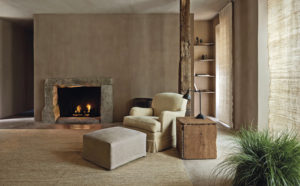
Quiet life in restrained neutral colors
In wabi-sabi aesthetics, it is common to use earth tones or beige as the main colors to create a peaceful and comfortable atmosphere. If you want to get started with wabi-sabi design, you can consider the color of the ceiling, walls, and floors as the first step, because painting and lacquer are the first choices that are easiest to change the atmosphere of your home and are more budget-friendly. The difference between wabi-sabi and minimalism is that in addition to both relatively neutral colors, wabi-sabi also adds undecorated materials to create a natural sense of the passage of time, such as: water mold, imitation water mold paint, Materials such as diatomaceous earth can give the wall a hand-brushed texture, creating one of the elements of wabi-sabi aesthetics through imperfect textures.
2.Return to original materials, comfortable and natural
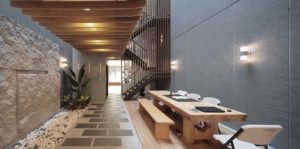
▲Chaozhou Qiu Zhai Design/Photo: B-STUDIO
Nature’s materials return to purity
One of the essences of wabi-sabi aesthetics is to embellish raw, unmodified materials into designs, allowing the purity of nature to be integrated into life. Therefore, logs, rattan, linen, bamboo, stone, etc. are all common materials. Among them, the original beauty of logs best reflects the Zen spirit of Japanese style. In addition, when choosing indoor plants, you can also choose to use dead wood and dried flowers and plants as decorations to add a comfortable and innocent atmosphere to the space.
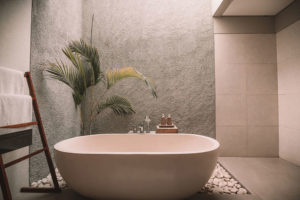
▲Design:Impressive INTERIOR DESIGN
3. Leave the space blank, quiet and comfortable
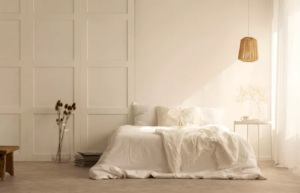
Don’t fill the environment, I say:"To the Ultimate"
When the field is left blank, more attention can be focused on enjoying and experiencing life. There are no too many gorgeous decorations or unnecessary furnishings. You just need to focus on feeling the beauty of life. This is also the most important spirit of wabi-sabi.
4. Warm lighting, rendering wabi-sabi
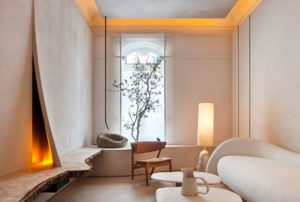
▲Photo V&MHOME
Warm light blends into the space
Light is the architect of space, a mobile and diverse element. In wabi-sabi design, the unmodified cement floor and natural hand-painted walls, combined with neutral colors, can easily give the space a sense of quiet distance. At this time, the design of light is very important. The warm light embellishes the hazy and warm atmosphere in the house, balancing other elements. The understated stillness of the wabi-sabi element.
5.Imperfection, asymmetry, irregularity
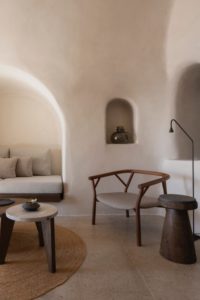
▲Design:Hema Interiors Photo:K-Studio
Accept the essence and be calm
Wabi-sabi allows people to embrace everything that is imperfect, rather than blindly pursuing things that are inappropriate or unnecessary. Therefore, irregular and asymmetrical ornaments or designs can often be seen in wabi-sabi designs.
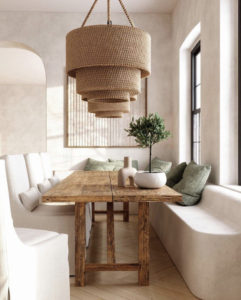
▲Design:Anthology Creative Studio
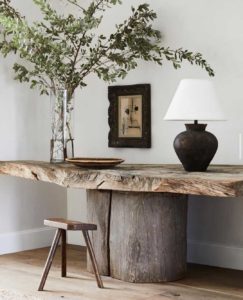
▲Design: Betsy Brown
6. Handmade decorations to show style
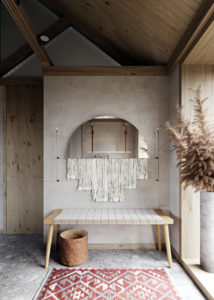
▲Architect:Maria Marina, Designer:Maria Marina
Unique beauty and humanistic atmosphere
Antiques, second-hand decorations, and handmade crafts with traces of time can all fully demonstrate the wabi-sabi aesthetics. In terms of handicrafts, they are mostly: ceramics, fabrics, utensils, etc. The time-characterized sense of the objects brings a sense of quiet reality into the house, rather than a flawless sense of alienation.
Wabi-sabi is a life attitude and philosophy that needs to be learned in this busy and chaotic life. Allow yourself to start from "Less is more"Less is more" to find more original intentions and protect more happy moments.
B-STUDIOSpecializing in simple design, if you have any architectural or interior design needs, please feel free to contact us:B-StudioOnline consultation
interior space-Chaozhou Qiu Zhai➦
construction space-zhongshanyang➦